Warning - This is a long post. It may be truncated. Please click “view entire message”.
Scotland is famous for its awe-inspiring castles and palaces, each one brimming with history and set against some of the most stunning landscapes you’ll ever see. When planning a road trip through this beautiful country, deciding which castles and palaces to visit can feel overwhelming. Sometimes, you might choose a specific one for its historical significance or even because it holds a personal family connection. Other times, the decision might simply depend on where you're heading geographically.
From my own experience, the best way to make the most of your trip is to plan your itinerary in advance. That way, you can make sure to visit the castles and palaces that are most meaningful to you, while also soaking in the spectacular scenery along the way.
If you need help with creating a Scottish road trip, this article may assist you.
This article will describe eleven mostly well-known castles and palaces I visited during my 18 day road trip in Scotland. These are in the order in which I visited them around the country. You may choose to visit in a different order depending on your chosen itinerary.
Many of these castles and palaces are managed through Historic Environment Scotland and are available with Standard Admission, Member and Explorer Pass options.
1. Edinburgh Castle
Edinburgh Castle sits high on Castle Rock and dominates the city skyline offering breathtaking views of Edinburgh and beyond. Its history stretches back nearly a thousand years while serving as both a royal residence and a military stronghold. This is one of the most iconic structures in Scotland and should be included on everyone’s visit.
On our trip, we planned on visiting this historic site twice; once on our first day for a short visit and lunch, and later in our journey, for a more in-depth experience.
On the day we arrived in Edinburgh, we knew we would be jet-lagged, so we opted for a more relaxed introduction to the castle. Within the castle walls, the Tea Rooms offer an Afternoon Tea experience which gave us a chance to relax, eat, and imagine partaking in high society in a castle setting. It seemed like the perfect welcome for our travel-weary bodies.
Once seated in the dining room, the elegant finger sandwiches, warm scones, and a glass of bubbles made a perfect introduction to history and our Scottish heritage.
Read about our afternoon tea experience here:
Later in our trip, we returned to Edinburgh Castle for the full experience. We took a guided tour led by a passionate local who told vivid tales of fierce battles, royal coronations, and haunting legends. As we stepped through the stone gates and into the heart of the castle, it felt like the weathered walls were eager to disclose stories of centuries past. It was the ideal way to connect the dots between what we’d read and what we could now see and feel in person.
After the tour, we explored several key sites. St. Margaret’s Chapel, the oldest surviving building in Edinburgh, was surprisingly small yet deeply moving.
The Crown Jewels of Scotland were all displayed with dramatic lighting and historical context and well worth the wait.
The Military Museum provided a compelling journey through Scotland’s military past and highlighted everything from medieval warfare to modern-day conflicts.
If you plan on visiting Edinburgh Castle in the summer months, be sure to book the Guided Tour and the Tea Experience ahead of time. They sell out quickly.
2. Midhope Castle
On our first day outside of Edinburgh, we opted for a visit to Midhope Castle. For many people, it is just another castle residence, but for anyone who is a fan of Outlander, like me, it felt like stepping straight into the 1700s and onto the homestead best known as Lallybrook, Jamie Fraser’s family home in the series.
Tucked away on a peaceful estate, this spot is a bit off the beaten path and not reachable by public transport. Although you’ll need a car to get there, the scenic drive through the Scottish countryside only adds to its charm.
As we pulled up the narrow, winding road and the weathered stone tower came into view, it truly felt like we’d been transported back in time. I’d seen this view of the estate several time in the series, picturing Jamie and Claire, or other family members returning home.
Though the interior of Midhope Castle is closed to visitors for safety reasons, just being able to walk around the exterior was an experience in itself. The surrounding silence, broken only by birdsong and the wind through the trees, added to the feeling that we had stepped out of our own time and into the world of Claire and Jamie.
The real history of the tower house dates back to the 15th century and it was once home to the Earls of Linlithgow. Today, it is managed by Hopetoun Estate and a nominal fee is charged to view the relic. In 2025, one hour guided tours are offered.
3. Linlithgow Palace
A short drive from Midhope Castle is the town of Linlithgow. Centuries old buildings, ancient pubs and beautiful parks make this stop a great place for a lengthier visit. In the centre of town lies the historic Linlithgow Palace.
Visiting Linlithgow Palace was an emotional experience for me—not just because of its haunting beauty and deep historical roots, but also because of a personal connection.
My father-in-law was born and raised in Linlithgow, and as a child, he used to play in and around the palace ruins, long before it became a major tourist destination. Walking through those ancient stone corridors, I couldn't help but imagine him running through the same archways, climbing the same steps, completely unaware of the centuries of royal history that surrounded him.
The palace itself is breathtaking, even in its ruined state. Originally built in the 15th century, it served as a royal residence for the Scottish monarchs, and was the birthplace of Mary, Queen of Scots.
Set against the backdrop of Linlithgow Loch, the site is both grand and peaceful, with crumbling towers, spiral staircases, and open courtyards that hint at the splendor it once held. It’s more than just a destination for history enthusiasts—there’s a powerful, almost haunting atmosphere, as if the stone walls still echo with the lives and stories of those who once walked its halls.
If you’re in the area, it’s absolutely worth a visit. Bring a picnic lunch and enjoy the day walking along the paths, exploring the adjacent cemetery or just enjoy the waterfront views.
For me, it was more than sightseeing—it felt like touching a piece of family history.
4. Stirling Castle
Another impressive castle is Stirling Castle, one of Scotland’s most significant historical sites. Perched on a volcanic rock, the castle offers panoramic views of the surrounding landscape and it’s easy to see why it was such a strategic stronghold throughout Scottish history.
Stirling Castle was once the residence of the Stewart kings and queens, and it played a crucial role during the Wars of Scottish Independence. Inside, visitors can explore the chapel, kitchen, courtyards, and the lavishly decorated royal apartments. I decided to take a guided tour, which turned out to be the best way to really understand the significance of the castle and about the castle's role in Scotland's history. Our guide was fantastic with stories, humor, and historical tidbits that brought the place to life.
The nearby Wallace Monument, which stands proudly on Abbey Craig, is dedicated to the Scottish hero, William Wallace. It’s an impressive landmark that seamlessly blends cultural importance with stunning natural scenery. The sweeping views over Stirling and the surrounding countryside offered a powerful sense of just how vital this region was in shaping the course of Scotland’s history.
The hike up the hill was a bit of a challenge, but completely worth it. If the walk is too much for you, there is a small shuttle available on a first-come, first-served basis.
Inside, the monument brings to life the story and legacy of one of Scotland’s most legendary figures. If you're fortunate and the weather is on your side, you might even encounter an actor dressed as William Wallace, complete with costume and weaponry, sharing the history of Scottish battles and the struggle for control of the region. On the day, we were there, we had such luck!
Between the history, the architecture, and the views, the day at Stirling Castle and the Wallace Monument felt like stepping into the heart of Scotland’s past.
5. Doune Castle
After our morning visit to both sites in Stirling, we travelled down the highway to Doune Castle, about thirty minutes away.
Visiting Doune Castle was a wonderful experience, especially if you’re a fan of history and Outlander. Like Midhope Castle, Doune Castle played a major role in the TV series. It served as the setting for Castle Leoch, the home of Clan MacKenzie's laird in the series. The castle's rooms and corridors look just like they do on screen, which was such a fun experience for me as a fan. For those looking for an even more immersive Outlander experience, there’s an additional tour option where you can follow the story of the show, with specific stops at key locations from the series.
As for the castle’s history, this medieval fortress, dating back to the 14th century, was once the residence of the Stuart family and played a key role in Scotland’s history. The castle's impressive Great Hall, the stunningly preserved interiors, and its iconic stone structure truly transport you back in time. It’s remarkably well-preserved for its age, and the picturesque setting, surrounded by lush countryside, makes it even more captivating.
Upon arrival, you're provided with a device for a self-guided tour, which was a fantastic way to explore at my own pace. Make note that there is a gift shop onsite with a heavy emphasis of the Outlander theme.
Whether you're a history buff or a TV fan, Doune Castle is a must-visit destination that blends authentic historical significance with pop culture fame.
6. Urquhart Castle
Tucked into the rugged shores of Loch Ness, Urquhart Castle is one of those places that instantly sweeps you into Scotland’s dramatic history. The castle dates back to the 13th century and was a strategic stronghold during the Wars of Scottish Independence. It changed hands countless times, each chapter adding layers to its storied past. Even in its ruined state, there's a sense of power and resilience about the place—you can practically feel it in the air. Walking through the crumbling ruins helps you imagine the clashes that took place there over centuries.
Aside from the history, the views from the castle are amazing. From the castle's tower, I had a sweeping panorama of Loch Ness stretching out in both directions. Under shifting clouds and drizzle, it was easy to believe in the legends of the Loch Ness Monster lurking just below the surface.
Although Urquhart castle is listed as a “must-see” in almost every tourist brochure, visiting Urquhart isn’t just about ticking off a historic site—it’s about standing in a place where myth, landscape, and history come together in the most unforgettable way.
If you're in the Highlands, or heading further up the loch to Drumnadrochit to explore the folklore of the “Loch Ness Monster”, Urquhart Castle is an easy and worthwhile stop along the way. You owe it to yourself to take a little time to wander its ruins and explore a piece of Scotland’s legendary history.
7. Dunrobin Castle
Visiting Dunrobin Castle felt like stepping straight into a fairytale. Towering above the North Sea with its turrets and spires, it’s one of the most striking castles I’ve ever seen. The castle has a rich and complex history—it’s been the seat of the Earls and Dukes of Sutherland since the 13th century, though the current structure owes much of its elegance to 19th-century redesigns inspired by French châteaux. As I walked through its grand halls and richly decorated rooms, and outdoor gardens, it was easy to imagine the centuries of nobility who once called it home.
One of the highlights for me was the falconry display. Watching a skilled falconer work with hawks and falcons with such precision was mesmerizing—I never realized how intelligent and responsive those birds could be. The way the birds soared effortlessly over the castle grounds, with the North Sea and the castle as the backdrop was breathtaking. You could really feel the connection between the falconer and each bird—it wasn’t just a show, it was a glimpse into an ancient art form that’s still alive and deeply respected. The falconer told how his birds are used for modern-day hunting of problem rodents.
Although Dunrobin Castle is located north of Inverness, it’s worth the trip. Dunrobin isn’t just beautiful—it’s full of life, history, and moments that stay with you long after you leave.
You can read more about Dunrobin Castle in this article:
8. Tulloch Castle
Staying at Tulloch Castle was one of those rare experiences where you genuinely feel like you’ve stepped back in time—and into the shoes of royalty. Perched on a hill in the Highlands near Dingwall, the castle dates back to the 12th century and was once home to Clan Davidson.
From the moment I walked through its heavy wooden doors, I felt wrapped in centuries of history. The grand staircase, the antique furniture, the roaring fireplaces—it all made me feel like I was living in another era. If you're going to stay here, you have to splurge on the King or Queen Suite. Trust me, waking up in a four-poster bed beneath carved ceilings, with views over the Highland hills, is the closest thing you’ll get to being royal for a night.
But Tulloch Castle isn’t just about elegance and old-world charm—it’s also one of the most haunted places I’ve ever stayed. There’s a chill in the air that isn’t just from the Highland breeze. The most famous ghost is the Green Lady, who’s said to wander the halls with a tragic grace. I didn’t see her myself, but there were definitely a few moments where the atmosphere felt… different. Eerie, but in the best kind of way—like the castle was quietly watching. It’s that perfect mix of luxury, history, and mystery that makes Tulloch unforgettable.
You can read more about Tulloch Castle here:
9. Duffus Castle
Visiting Duffus Castle was one of those unexpectedly delightful detours that ended up being a highlight of our trip. Perched just a few miles from Elgin in Moray, the castle sits proudly on a grassy mound, surrounded by sweeping farmland and wide-open skies. It dates back to the 12th century and was once one of the finest examples of a motte-and-bailey castle in Scotland. Though the stone ruins are all that remain now, they’re incredibly atmospheric. You can still climb through the old halls, admire the views from the top of the hill, and imagine the life of nobility who once called it home.
One of the funniest moments of our visit, though, came when we met a lovely local woman whose last name was—believe it or not—Duffus. Coming from North America, where “duffus” is slang for someone who’s a bit clumsy or clueless, it took everything in us not to giggle when we introduced ourselves. She was completely charming and clearly used to the reaction, laughing it off with good humor. It turns out “Duffus” is a respected old Scottish family name, tied to the land and the castle itself. That little culture clash gave us one of our best travel stories—and a new appreciation for the names we take for granted.
10. Balmoral Castle
Visiting Balmoral Castle wasn’t originally on our itinerary, but I’m so glad we made the detour. We had met up with some cousins while traveling through the Highlands, and they were eager to check out the fall markets held on the castle grounds. Honestly, I thought we were just tagging along for some shopping and snacks—but the visit turned out to be one of the most memorable parts of our trip.
Balmoral has this quiet elegance about it, nestled in the heart of Scotland, surrounded by forests and mountains that seem to go on forever. The crisp autumn air, colorful leaves, and cozy stalls made the whole place feel like a postcard.
The history of Balmoral is fascinating too. It’s been a royal residence since Queen Victoria and Prince Albert purchased it in the mid-1800s, and it’s still used by the Royal Family today. There’s a certain reverence in the air, knowing you’re walking the same paths as generations of monarchs. While most of the castle isn’t open to the public, the parts we could explore—along with the stunning gardens—were more than enough to get a sense of its charm. And the fall market? It was full of local crafts, Highland treats, and cheerful vendors who made us feel right at home. It all came together in the best, most unexpected way.
11. Holyrood Palace
We ended up at the Palace of Holyroodhouse almost by accident—but in the best way. We’d started our day at the top of the Royal Mile in Edinburgh, weaving through shops, side streets, and historic closes, and by the time we reached the bottom, there it was: Holyroodhouse, grand and quiet against the backdrop of Arthur’s Seat. Honestly, we hadn’t come with any particular reverence for its royal history or its impressive architecture—we mostly just thought, “Well, we’ve walked all this way, might as well see what’s at the other end.”
But once we stepped inside, I was completely drawn in. The palace has been a royal residence for centuries, and you can feel that weight of history in every corner—from Mary, Queen of Scots’ chambers to the ornate state apartments still used by the monarch when in Scotland. The blend of grand, public elegance with the more intimate, personal stories woven through the palace was incredibly intriguing. And the ruined abbey just behind it? It had this beautifully eerie atmosphere that gave the whole place an almost otherworldly feel. Holyroodhouse ended up being so much more than just a destination at the end of a walk—it was like stumbling into living history.
Conclusion
As we explored Scotland’s castles and palaces, we came to realize they’re far more than just stunning landmarks—they're gateways into a deep, multi-layered history that still quietly echoes through everyday life.
What started as a simple road trip quickly became a journey filled with unexpected detours, personal connections, and a deeper appreciation for the country's history, landscape, and charm. Whether it was enjoying afternoon tea inside Edinburgh Castle, standing on the shores of Loch Ness at Urquhart, imagining ghosts at Tulloch, or laughing with a local named Duffus, each stop told its own story and added a unique piece to the puzzle of Scotland.
If you’re planning your own Scottish adventure, I hope this article offers both inspiration and practical insight. Don’t stress too much about seeing everything—sometimes the most memorable moments come from the unplanned. Let your interests, your family ties, or even just your curiosity guide you. And most importantly, take your time. Scotland has a way of drawing you in, revealing itself slowly, one castle stone and misty mountain at a time.
And take note, these are only a few. There are hundreds of castles and palaces in Scotland worth visiting.






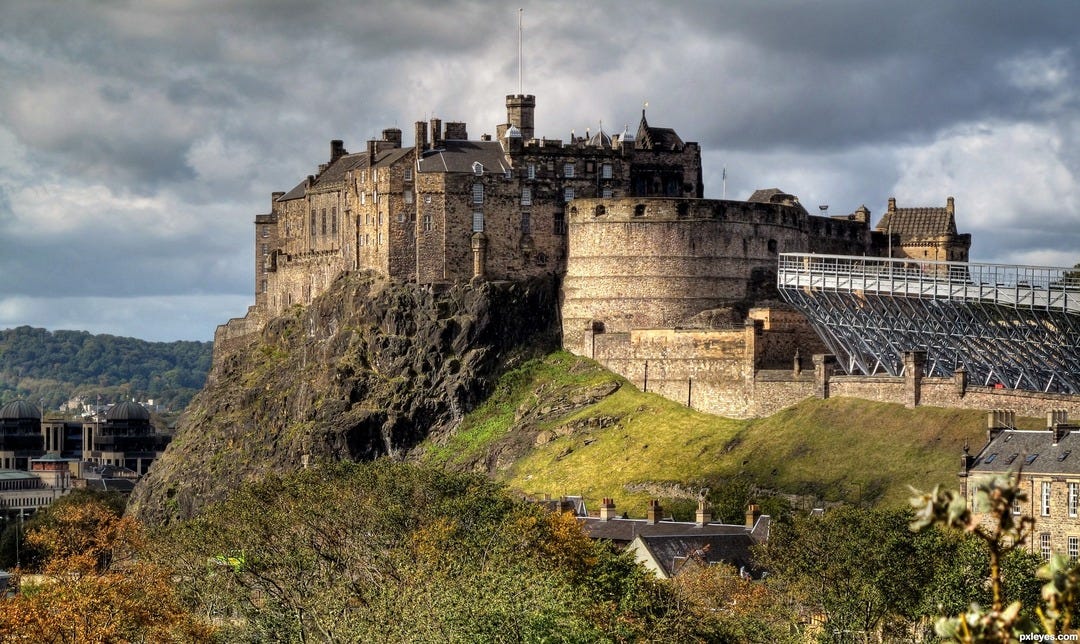


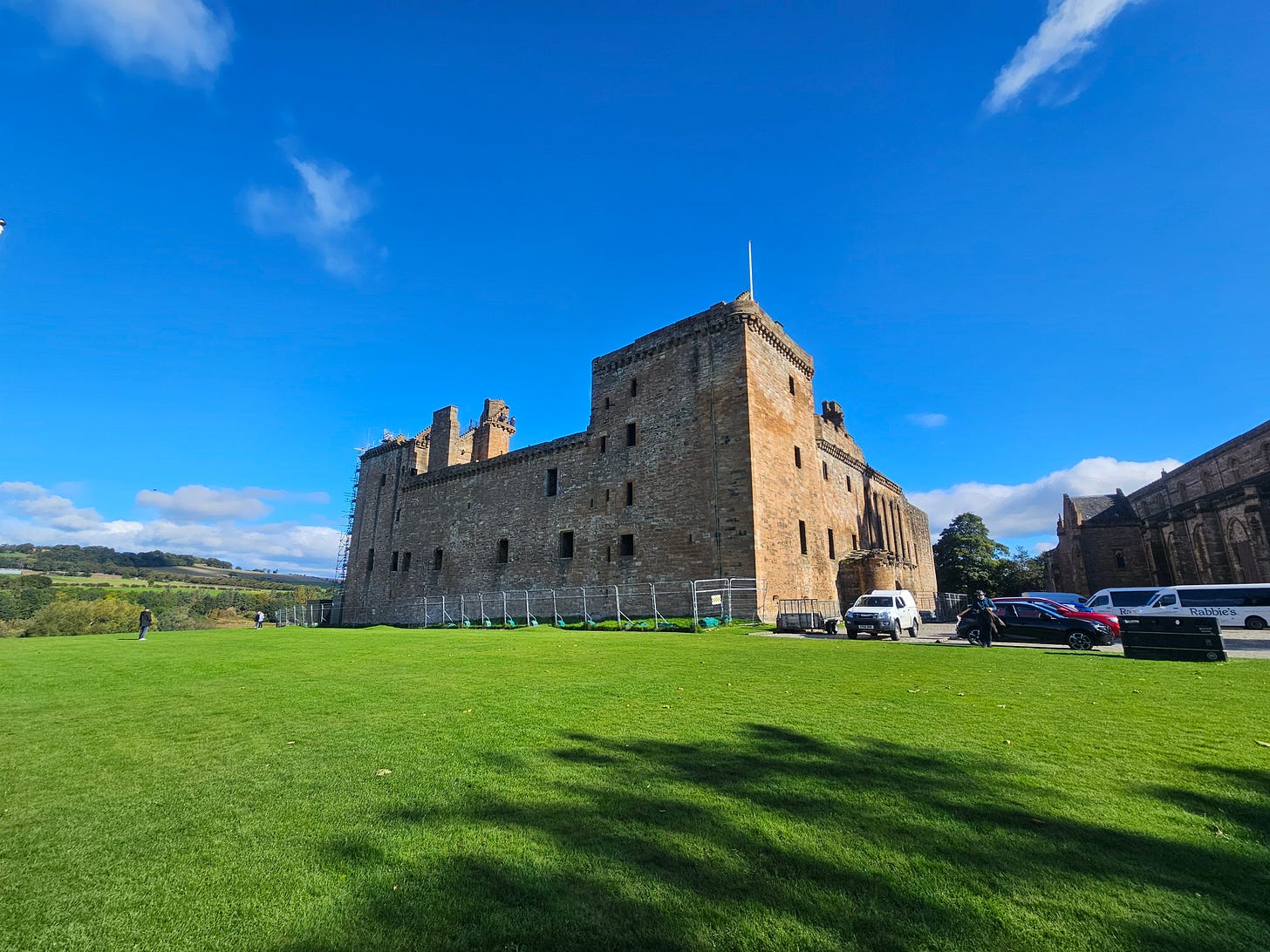
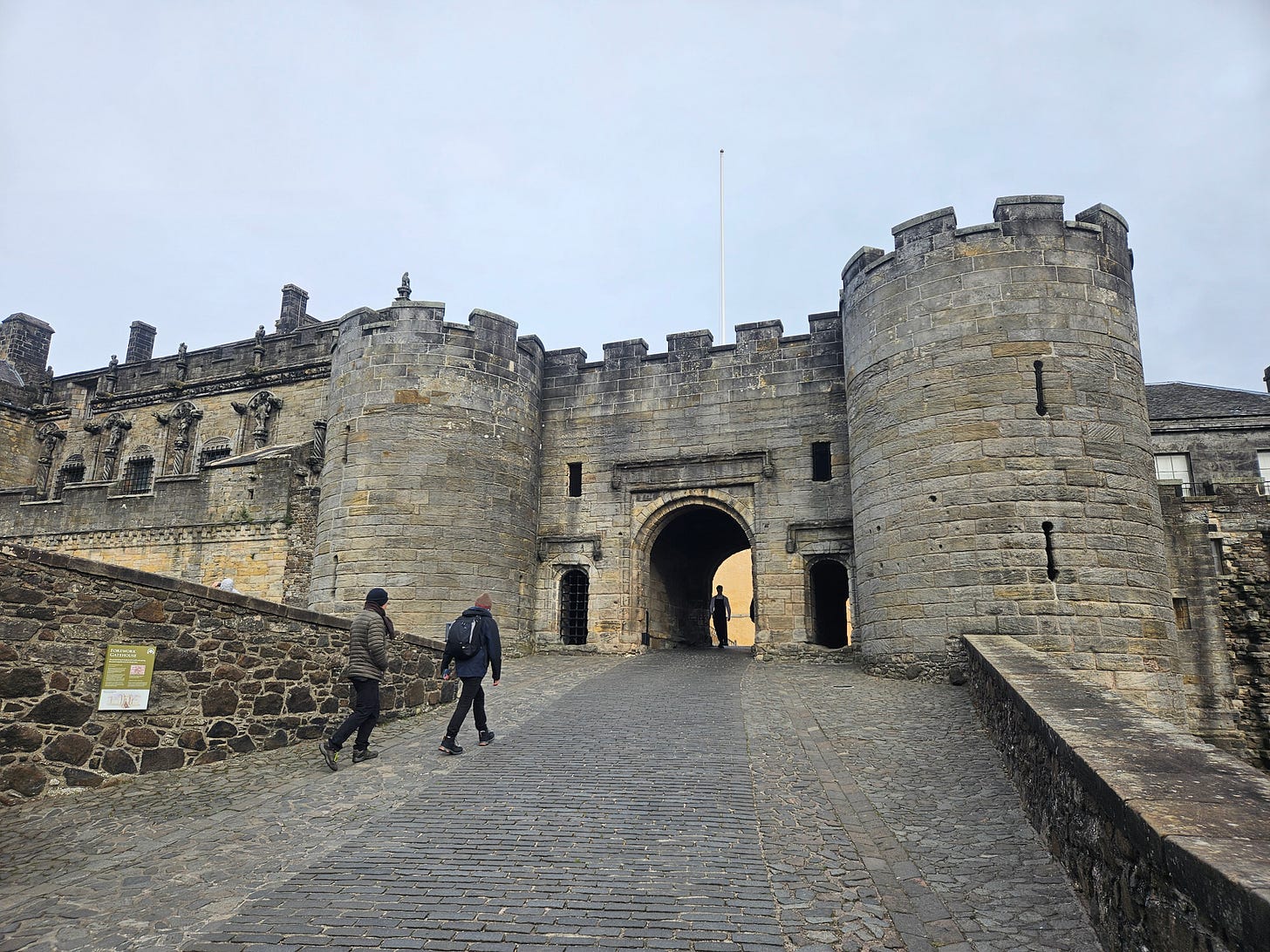
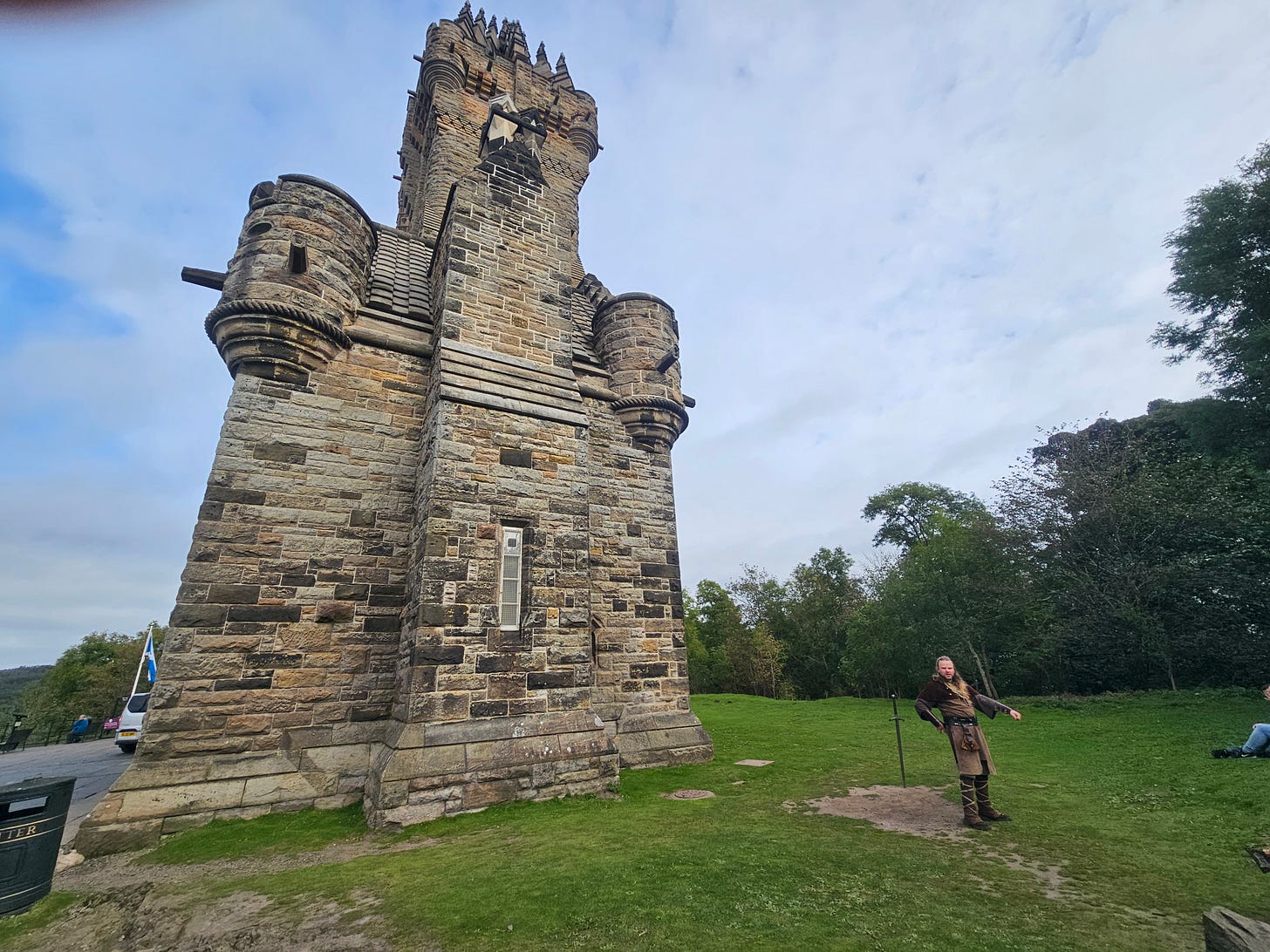

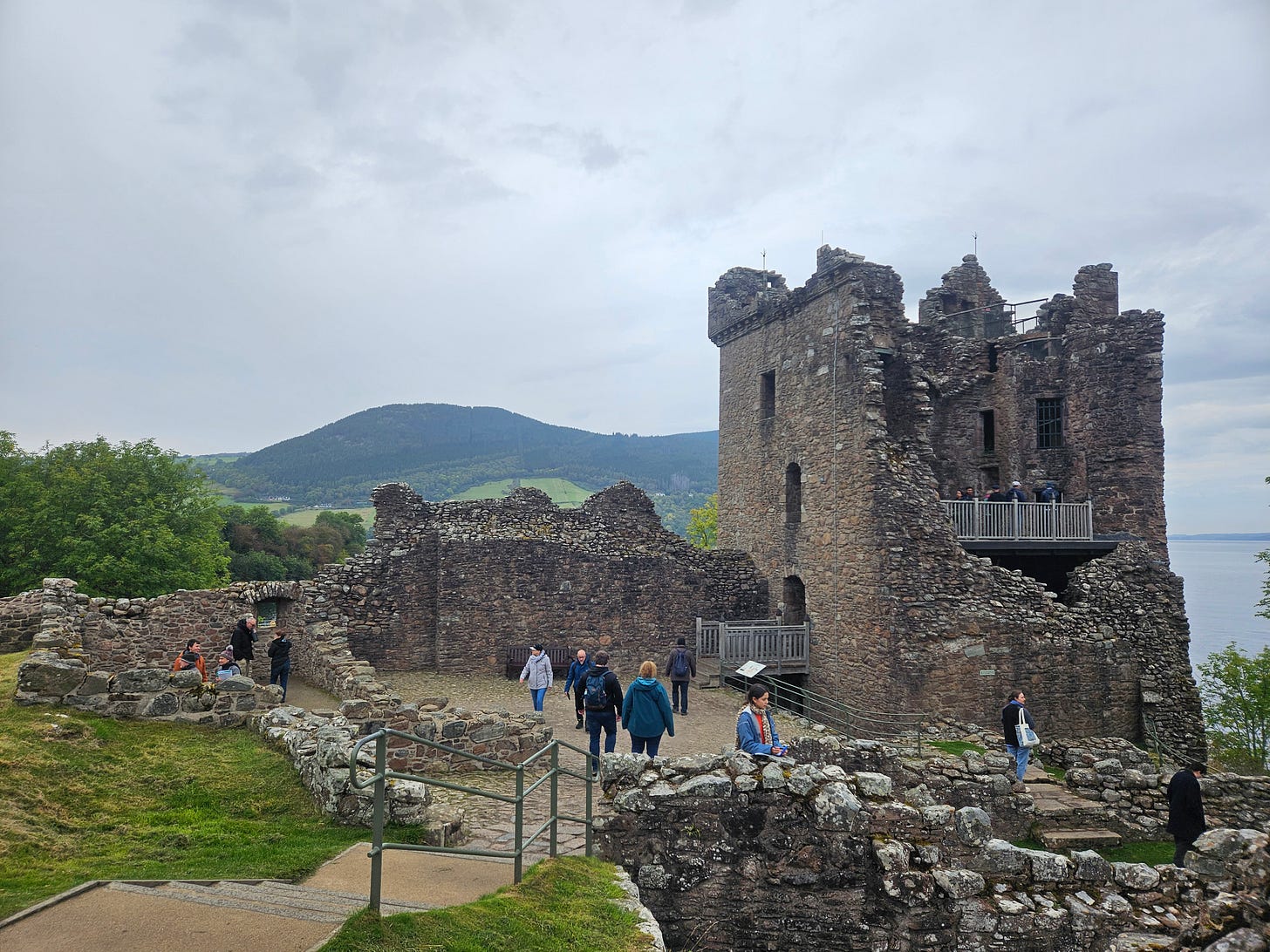



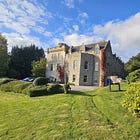
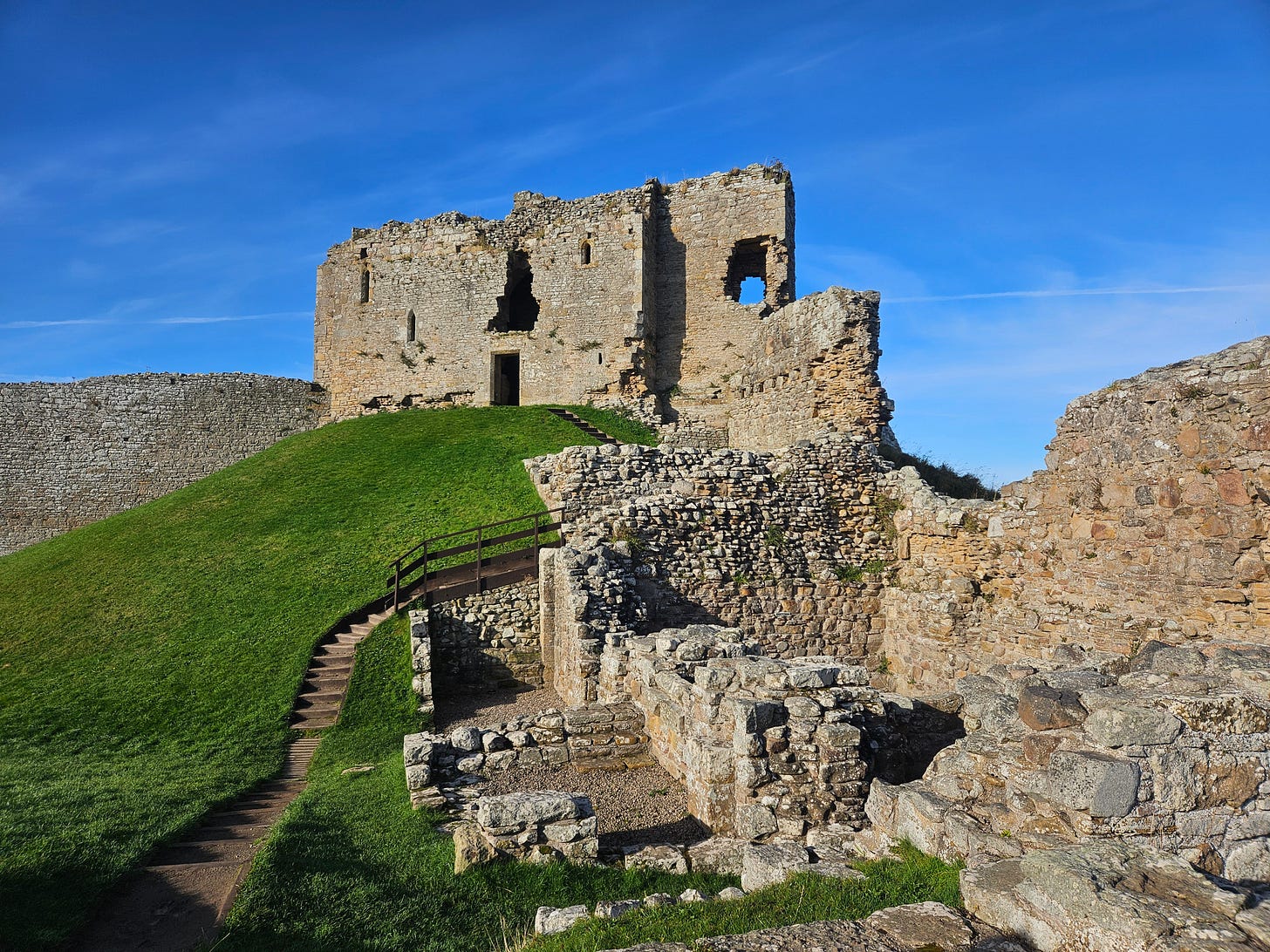
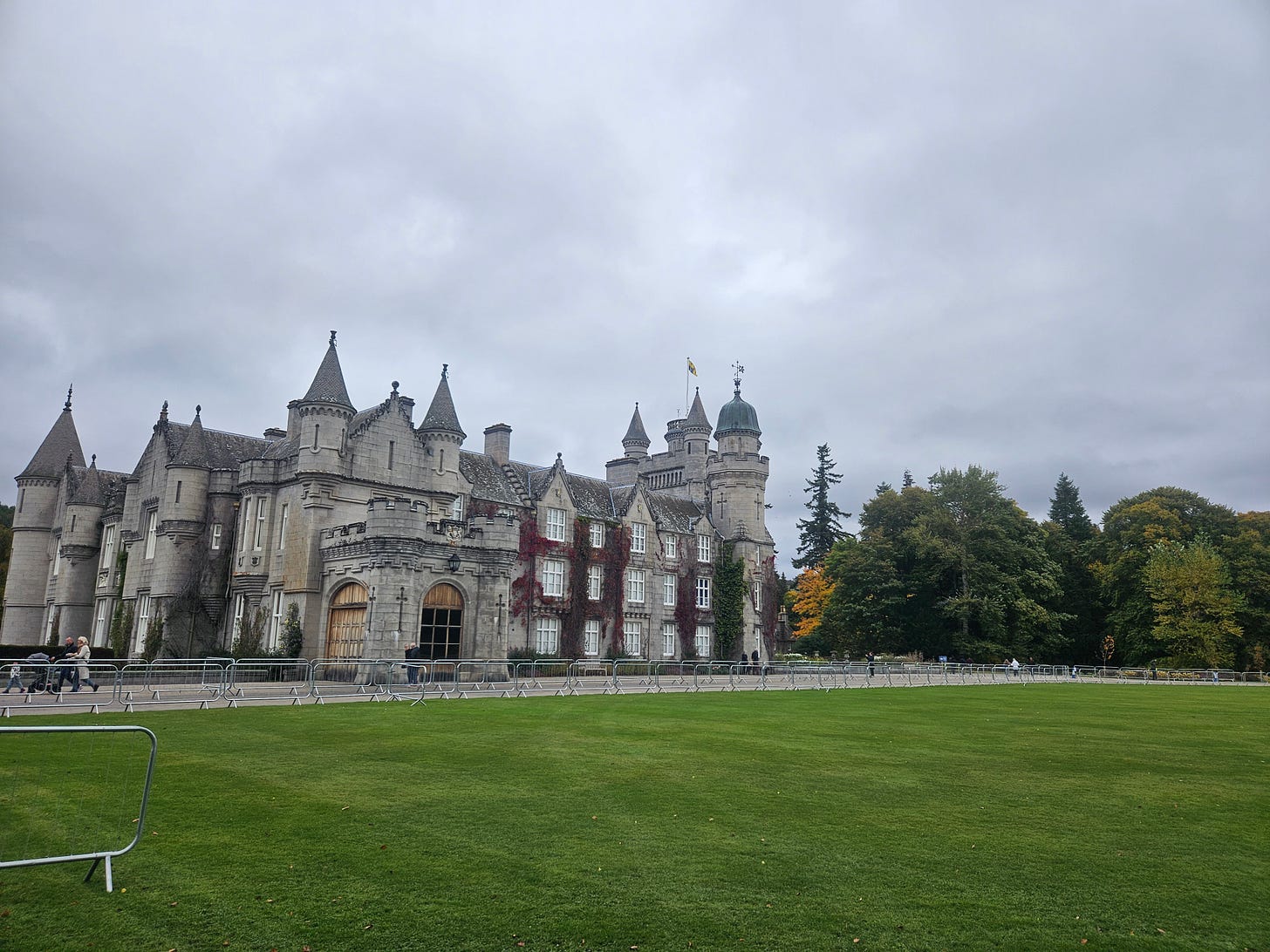
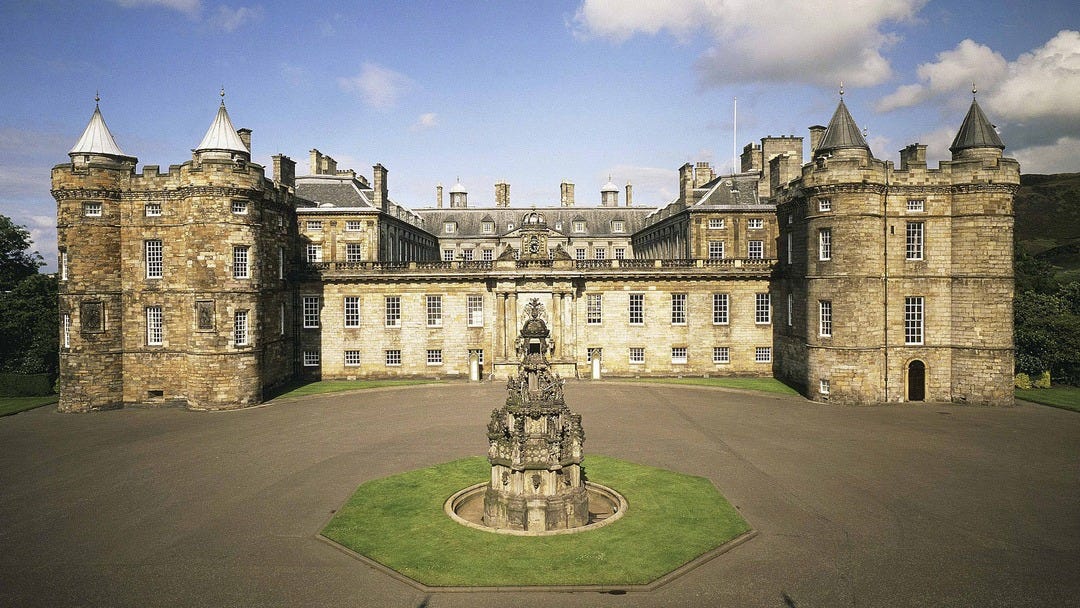
I've visited a few of these, and agree with them being must visits. I've never heard of Linlithgow or the castle, so that would be a nice new hidden gem to visit. Having that personal connection probably made your visit even more special. Often we forget the tourist places we visit were actually used!
As someone who loves mansion tours, I also love castle tours. Though, the castles we have in America tend to be modeled after the castles in Europe - but nonetheless, i'll take it! I loved reading about your personal connection to Linlithgow Palace, and I can certainly relate when I visit a certain landmark or place that had a deep connection to a relative. It's also great to see how history is preserved, down to the heavy wooden doors at some of the locations.
OK, i'm adding Scotland as a place I need to visit!